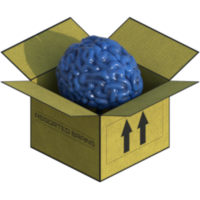To keep assets down it will be in true topdown so sprites or animated sprites can be rotated instead of being rendered in 8 or 16 directions.
I disagree with you taking such a major game view decision based on the cost of assets.
You can always compromise your graphics with enough minimalism and make them presentable enough so you can keep your original game view idea.
Did you know that low-poly, flat-shaded prerendered 3D graphics can be easier to produce than painted 2D graphics? you should make some flat shaded models in Blender3D or other, add some ambient occlusion (it's fully procedural, no cost in that) and direct sun light and shadow and animate those models into sprite canvases.
Take this game for example; It's built from only flat-shaded models (some are used as prerendered graphics, others are used real-time):

The game is MicroSprint by Stevie Goodwin.
This is a racing game, but those palm trees, the shore and the ship could totally fit in a millitary game. Those real-time hard edged shadows help a lot with making things volumetric and believable even though these meshes use only vertex coloring for shading - I suggest you read up on vertex coloring and its effects on game graphics, it's a great cheap tool when you can't afford the texture memory.
EDIT: As for the top-view distinctness problem, as Prinz Eugn puts it above, you need to use symbols.
When we're looking at enemy bases in an RTS game we always depend on vision to tell which kind of buildings\factories they have. A developer of RTS games designs each factory to be structurally unique while keeping the same "race theme".
That's what you need to do: make each building (including simpler ones such as barricades) visually unique enough so that players are able to recognize them at any view as soon as they lay eyes upon them. It's doesn't have to necessarily look like the building it's supposed to represent, but rather look different from the other buildings so the player can memorize it like "ah, so that's what this game considers a barricade".









